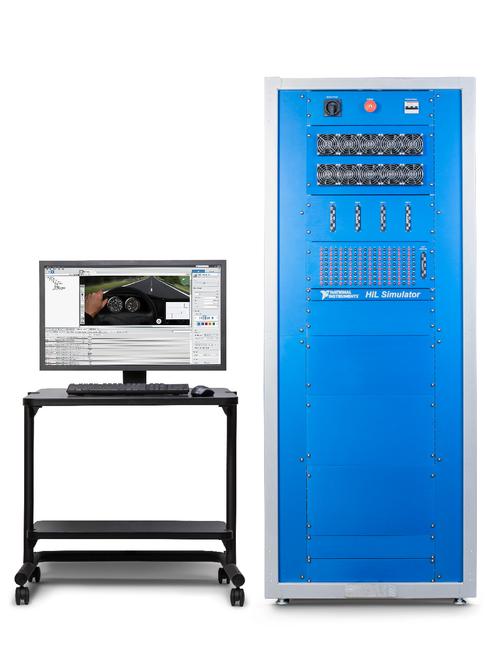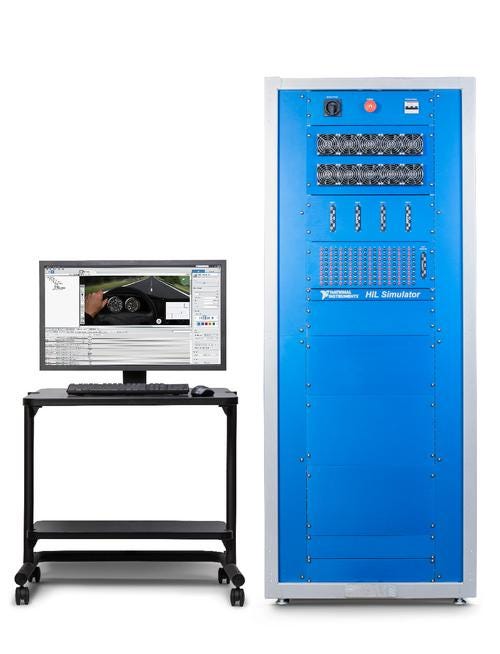Hardware-in-the-Loop Test Comes to Autonomous Cars
August 4, 2016

An expanded hardware-in-the-loop (HIL) test system promises to offer a better way to test engineering's most complex products, from defense aircraft to autonomous cars.
Introduced at this week's NIWeek 2016 show in Austin, TX, the turnkey HIL Simulators product essentially consists of a new chassis that works with the company's existing HIL platform. Its open, modular architecture is targeted at high-current applications that need to simulate complex sensor data from such sources as cameras, radar, and RF signals.

For big original equipment manufacturers, such as the automakers, the new HIL simulators offer a more cost-effective way to test their most complex products. "The alternative to HIL is field testing," Noah Reding, senior business segment manager for real-time test at National Instruments, told Design News. "In field testing, they need prototype vehicles, which can cost a half-million dollars. And they need test tracks, which can cost $100,000 per day. HIL can significantly reduce cost, because it allows them to do it in the lab."
Hardware-in-the-loop has long been used as a way of simulating complex, real-time embedded products. It involves using a mathematical representation of a complex system. In automotive, for example, HIL might be used to simulate the behavior of powertrain or body electronics. In aerospace, it can be applied to fly-by-wire control systems.
NI's new product adds a wrinkle to HIL simulation, however, by enabling users to reduce the amount of hardware customization they might ordinarily have to do for a HIL test. The SLSC (Switch Load and Signal Conditioning) chassis, as it's known, serves as a form factor that engineers can design to.
READ MORE ABOUT NATIONAL INSTRUMENTS:
"Traditionally, to go from an automotive ECU to a HIL test system, there are certain voltages and high current levels needed to actively test the device," Reding said. "SLSC is a chassis that works with our HIL platform. Special signal conditioning can be put in the chassis, allowing us to offer a more full and complete system."
NI said the chassis can be applied to HIL test in a variety of industries, including automotive, aerospace, grid power, and train control. At an NIWeek keynote, Saab Aeronautics said it used the technology to fix embedded software defects on its Gripen fighter aircraft.
Reding said the key benefit for customers is time reduction. "Unfortunately, customers are spending too much of their time on customization and not enough on the thing they know best -- their own domain expertise," he told us
"We're saying, 'You will always have customization,'" Reding added. "We want to give you the customization in the right places."
Senior technical editor Chuck Murray has been writing about technology for 32 years. He joined Design News in 1987, and has covered electronics, automation, fluid power, and autos.
About the Author(s)
You May Also Like
.jpg?width=300&auto=webp&quality=80&disable=upscale)


